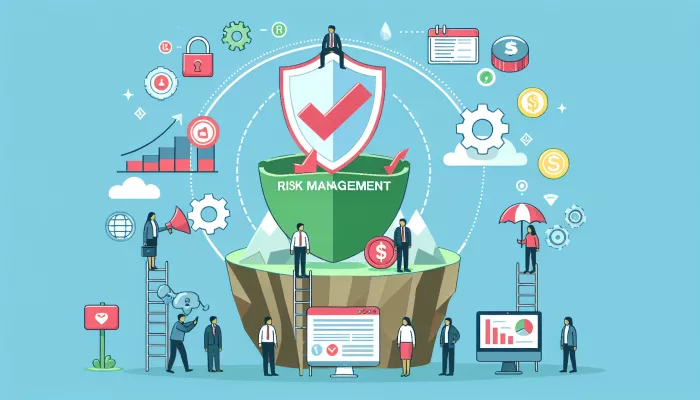
Understanding the Basics of Risk Management
Risk management is a critical component to the success of any business.
It refers to the process of identifying, analyzing and responding to potential risks before they turn into serious problems.
Having a solid risk management plan can save an organization from unforeseen disasters, ensuring business continuity.

In essence, scratchs are uncertain events or conditions that, if they occur, will have a positive or negative effect on the objectives of a project or company.
They can come from a variety of sources, including financial, legal, technological, competitive, and even natural disasters.
Identifying risks is the first step in the risk management process.
This involves recognizing potential threats after careful analysis of the internal and external factors that may impact the organization.
Once risks have been identified, it is essential to evaluate them to determine the severity of the impact each risk can cause.
This phase helps prioritize the response to risk based on the likelihood of its occurrence and the magnitude of its impact.
Risk response involves developing strategies to minimize downside risks and maximize opportunities.
The answer options include avoiding, transfer, mitigate or to accept the risk, depending on the analysis done previously.
A crucial part of the risk management process is the continuous monitoring and risk review.
This involves constantly checking and updating the risk management plan to ensure that new risks are identified and managed effectively.
In conclusion, understanding the fundamentals of risk management is essential for any business that wants to thrive and grow sustainably.
It is a proactive approach to protecting assets and people, ensuring the stability and longevity of the organization.
When it comes to navigating the business environment, risk mitigation becomes a key piece for stability and sustainable growth.
Well-designed strategies can create a protective shield against potential threats, ensuring that the company is prepared to face unexpected challenges.
Below, we explore some effective strategies for mitigating risk.
O Business Continuity Plan (BCP) is essential to ensure that the company can continue operating in the event of unexpected disruptions.
This plan should include detailed procedures for how to keep critical operations running during and after a disaster.
A deep understanding of potential risks can be achieved through regular risk analyses.
Identifying and assessing risks allows companies to develop preventative and reactive strategies to address these threats before they materialize.
Both physical and cyber security are critical to protecting company assets.
Investing in up-to-date security technology and training employees on safe work practices are critical steps to mitigating security risks.
Fostering a culture that values risk management at all organizational levels can increase awareness and encourage the adoption of safe practices.
In other words, employees who are well informed about risks and committed to mitigation contribute significantly to business resilience.
Using specialized risk management software can significantly improve a company's ability to identify, assess and monitor risks.
First and foremost, these tools can provide valuable insights and automate complex processes, making risk management more efficient.
Maintaining open and transparent communication with stakeholders, including investors, customers and suppliers, helps create a support network that can be vital in times of crisis.
Furthermore, involving stakeholders in the risk management process can provide valuable external insights.
By adopting these strategies, companies can strengthen their defenses against potential risks, ensuring not only their survival but also their long-term success.
Maximizes Return on Investment (ROI): One of the practical benefits of risk management is the ability to maximize return on investment.
By proactively identifying, analyzing and mitigating risks, companies can avoid financial losses while ensuring resources are allocated efficiently.
Improved Decision Making: With a solid risk management process, companies can
However, they benefit from detailed information and in-depth analysis that support more informed and strategic decision-making.
This allows you to identify growth opportunities while protecting yourself against potential threats.
Strengthening Corporate Reputation: Companies that can manage risks effectively
What’s more, they are often seen as more trustworthy and responsible, which can strengthen reputation and trust with customers, investors and partners.
By addressing risks linked to environmental, social and governance (ESG) issues, companies not only comply with regulations, but also demonstrate their commitment to sustainability.
This attracts responsible investment and improves relationships with all stakeholders.
Keeping up to date with changing laws and regulations is essential.
Risk management helps companies quickly adapt to new regulatory requirements, avoiding fines and other penalties.
Conclusion: Risk management is an indispensable tool for long-term success.
By integrating risk management into everyday decisions, companies not only protect their financial future, but also foster a safer, more sustainable and ethical work environment.